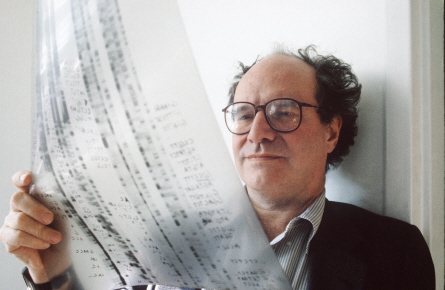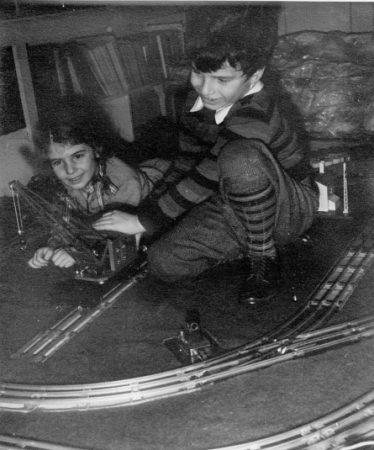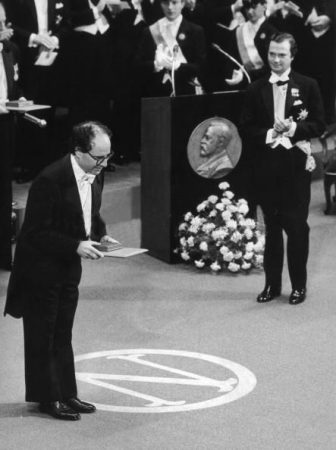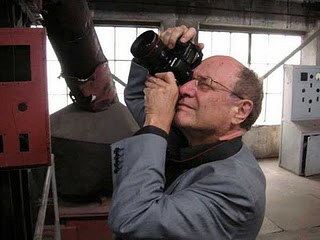Scientist Profile: Wally Gilbert
Wally Gilbert is interested in just about everything. He began by studying physics and then switched to biology, eventually winning an Albert Lasker Basic Medical Research Award in 1979 and then a Nobel Prize in Chemistry in 1980.

Wally Gilbert
Jane Reed/Harvard University
By Roberta Kwok

Educators and Parents, Sign Up for The Cheat Sheet
Weekly updates to help you use Science News Explores in the learning environment
Thank you for signing up!
There was a problem signing you up.
Roberta Kwok: How did you first get interested in science as a kid?
Wally Gilbert: I always wanted to go into science from an early age. I had a minerals collection as a kid and joined a rock-hunting group when I was 10 or 11.
I had a chemistry set in those days. There’s an experiment in which I blew myself up. I was making hydrogen from zinc and hydrochloric acid, and I tried to light the gas too soon, and the flask exploded. I had a few stitches in my wrist.
You were a finalist in the Science Talent Search when you were in high school. Can you describe the project that you entered in the competition?
One was a chemical project in which I suggested there might be a way of separating two very similar chemical elements. I wrote my essay about that.

The project I showed was a telescope-camera I made. It was a black box with film at one end and a lens at the other. I took pictures of sunspots, black splotches on the face of the sun. They’re gigantic magnetic storms in which the temperature in the storm is a little lower than the temperature around it.
You started out by studying physics but then later switched to biology. How did that happen?
I became a chemistry and physics major at Harvard. When I graduated, I went off to graduate school, first to Harvard and then to Cambridge University.
I met a biologist at a party in Cambridge, Jim Watson, and we became friends. He had discovered the structure of DNA, he and Francis Crick. He and I came back to Harvard at the same time.
In the summer of 1960, he said, “Something very exciting is going on in the lab.” Physics was going slowly, so I came over to his lab. Those experiments were trying to ask a fundamental question: How do the molecules that make up a living organism really work?
One aspect of that question is the DNA. That’s the molecule that carries the information that dictates a new organism. We call that the genetic information.
It’s a long, thin molecule consisting of two strands. There are four different chemical groups arranged along one strand that serves as a sort of very long word. In fact, that word in our bodies has 3 billion letters. The order along one strand dictates a mirror image order on the other strand.
That information gets translated into molecules called proteins. The structure of our bodies is actually built out of proteins. The question we first worked on was: How does the information get from the DNA to make the protein? The answer is a molecule called messenger RNA. This RNA serves as a set of instructions to make a protein.
You’ve won a Lasker Award and a Nobel Prize for your research on sequencing DNA, basically figuring out the order of the letters in this very long word. How does that method work?
Fred Sanger in England invented one method, and I invented another with my collaborator, Allan Maxam. The very first piece of DNA we deciphered was only 20 groups long. It took us two years to work out the order of those groups. A typical gene in our body is some ten thousand groups long, so you couldn’t possibly work out the entire order of groups for a gene.
Then suddenly we discovered a simple way of doing it. It involves measuring a distance from some point on the DNA to each occurrence of a chemical group. You could break the DNA molecule into fragments and separate those fragments by size. In an afternoon, you could work out hundreds of groups.

Now there are machines that will do hundreds of millions of chemical groups in an afternoon. So we’ve gone from being able to work out a sequence of only the tiniest pieces of DNA to working out the entire sequence of bacteria, other organisms, and the human genome. The process is getting faster and faster.
Why would we want to know the sequence of DNA?
We would like to understand how our organism develops, how it’s put together in detail. We would like to understand all the genes that people share.
Then there’s a medical problem. Well, we actually of course all differ. We don’t all look like identical twins. Those differences mean we have differences in our genes.
From a medical point of view, one wants to understand those differences. For example, a drug for high blood pressure will work in one person but not work in another because the biology of each person will be different.
So knowing a person’s DNA sequence can help you give them the right medicine?
That’s right.
You’re now working as an artist and photographer. Why did you decide to start making art?
I choose what I do by what I become interested in. What I discovered in the early 2000s was I could make very big images using a small camera. The biggest is eight feet by 12 feet. Those big images have an emotional effect. They strike me as beautiful.
What kinds of things do you like to photograph?
I started with little elements of the world: bark, rotting wood, decaying paint, metal, graffiti. I did a whole series of pictures of industrial machines falling apart. Then I did a series of photographs of the ballet in rehearsal. If you’re on Facebook, and you friend me, I’m Wally Gilbert. There are a large number of albums.
Why were you interested in photographing ballet dancers?
The ballet is such a beautiful art form. We have a very good ballet company in Boston. An art critic named Christine Temin wanted to do a book called Behind the Scenes at Boston Ballet, and she invited me to do the photographs. I had not photographed leaping dancers, so I thought it would be fun.
What do you think are the similarities between art and science?
There’s a strong similarity in terms of the creative impulse, a desire to do something different and new. In science, what we’re most interested in is a new solution to new problems. And it’s amazing, the speed of discovery.
The real thrust in art is also, “What is really new and different?” If I use a new material, I must be doing something new. Can I use a classic material in a way no one’s used before? The creative impulse is very similar.
Sometimes it seems like kids have to choose between being artists or being scientists. What advice would you give to a kid who likes both?
Do both! It’s not actually an either-or.

This story and other Science News for Kids features describing research in medicine and biology are supported with funding from The Lasker Foundation. The foundation and its programs are dedicated to the support of biomedical research toward conquering disease, improving human health and extending life.
Going Deeper:
Nobel Foundation website on 1980 chemistry Nobel Prize: http://nobelprize.org/nobel_prizes/chemistry/laureates/1980/
Lasker Foundation website on 1979 Basic Medical Research Award: http://www.laskerfoundation.org/awards/1979basic.htm